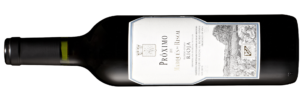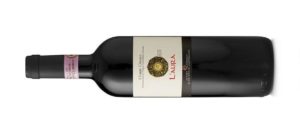Chablis: New Release Lamont’s Imports
Barry Weinman: 8th November 2018
For a number of years now, John Jens at Lamont’s has been importing a number of producers’ wines direct from Burgundy. This has allowed him to keep the prices down, by removing the costs associated with having a broker, importer and local wholesaler all taking a margin.
Typically, the quality of the wines has been very good, and the value excellent when compared to other producers available locally. The catch though is that the quantities available are quite low.
For me, the most impressive wines on a price/quality scale have been the Chablis. I have bottles of the Premier Crus from Sebastian Dampt and Sylvain Mosnier going back to 2010, and they are holding up very well indeed.
This year has seen another producer added to the stable. Vincent Dampt is the brother of Sebastian, and the wines are equally well made. The style though is a little different, with Sebastian favouring riper fruit characters and mid palate weight, whilst Vincent’s wines are leaner and racier, with the acidity adding great drive to the finish.
N.B.
- The prices listed are for the introductory promotional period, but I suggest getting in fairly quickly, especially for the great value Premier Crus
- The wines have only recently arrived in Australia, so took a little while to open up
- This was not a blind tasting, so the points are best used as a relative guide only
Reviewed
Sebastien Dampt – Chardonnay – Petit Chablis – 2015 (17.5/20 pts. $33.00). Pretty and perfumed, there is fantastic fruit on the nose for an entry level wine. Excellent mouth-feel and texture, with ripe stone fruit notes. A modern, elegant Chardonnay that has the presence of a more expensive wine, but lacks the ultimate length and depth.
Sebastien Dampt – Chardonnay – Chablis – 1er Cru – Les Beugnons – 2015. (18.1/20 pts. $44.50). There is a degree of finesse here that is charming. Lithe and subtle, this is quite shy at present with the texture a stand-out. The quality is on display with the supple, perfumed fruit that gradually builds with air. Should be very good with another two years in bottle.
Sebastien Dampt – Chardonnay – Chablis – 1er Cru – Cote de Lechet – 2015 (18+/20 pts. $56.50). Wow, this wine really makes an impression for all the right reasons. Intense stone fruit characters give way to minerals, toast and honey. Excellent balance and structure on the close.
Sebastien Dampt – Chardonnay – Chablis – 1er Cru – Vaillons – 2015. (18.5/20 pts. $56.50). Taut, fine and elegant, this is an excellent wine that needs 3 – 5 years in the cellar. The balance is key here, as everything is in place, though the fruit is muted at present. Lemon, honey and fine minerality are paired to ripe tropical fruit. Super stuff!
Sylvain Mosnier – Chardonnay – Petit Chablis – 2016 (17.4/20 pts. $29.00). Lemon, toast and supple lees work that shows as struck match and flint characters. Mouth-filling and rounded, this is an excellent drink now.
Sylvain Mosnier – Chardonnay – Chablis – 1er Cru – Beauroy – 2016 (18/20 pts. $45.00). Classic Chablis, with elegant, yet concentrated fruit paired to supple minerality and gentle flint/struck match notes. Excellent mouthfeel and length on the palate, with gentle toast and honey notes to close. Needs a year or two to open up.
Sylvain Mosnier – Chardonnay – Chablis – 1er Cru – Cote de Lechet – 2016. (18.3/20pts. $45.00). Very fine and elegant, this is a great example of the style. Supple, rounded and revealing, with the gentle minerality and acid carrying the fruit with ease. Delicious now, and sure to be better in a year or two’s time.
Vincent Dampt – Chardonnay – Petit Chablis – 2016 (17.7/20 pts. $27.00). Full of life, this is a leaner, racier style that is so typical of the region. Supple, perfumed fruit, gentle minerality and a saline tang make for an excellent aperitif with freshly shucked oysters as well as white meats such as grilled lemon chicken.
Vincent Dampt – Chardonnay – Chablis – 2016 (17.9/20 pts. $32.00). A step-up in intensity, with thrilling lemony acidity driving the palate. The grapefruit and melon flavours are a highlight, and bitter almond minerality adds drive and focus. Very good.
Vincent Dampt – Chardonnay – Chablis – 1er Cru – Vaillons – 2015 (18.6/20 pts. $46.00). A highlight of the tasting. Refined, fine and elegant, with subtle fruit and minerality. Very long, the finish is near seamless. Gentle aromatics build and are accompanied by a steely minerality and fine acidity. An exciting wine now, but also one that is sure to age brilliantly over the next 5+ years.


 Querceto Di Castellina – Chianti Classico – L’Aura 2013 (17.7/20pts – $38). The ripe fruit here will suit many Australian palates, as will the dollop of new oak sitting behind the fruit. A wine that can be drunk now with pleasure, but really needs 10 years to open up.
Querceto Di Castellina – Chianti Classico – L’Aura 2013 (17.7/20pts – $38). The ripe fruit here will suit many Australian palates, as will the dollop of new oak sitting behind the fruit. A wine that can be drunk now with pleasure, but really needs 10 years to open up.
